3D Printing car parts is the best option to give a new life to old cars, or to customize yours. Find out how here.
Table of Contents
Introduction
There is a very curious phenomenon in the current consumer society, many objects last longer than the support their manufacturers provide.
This happens with all kinds of products, such as technology, and is especially seen in the automotive industry, with vehicles that are no longer in production and for which the brand does not provide support by manufacturing spare parts.
As a result, these cars must survive on aftermarket pars and visits to junkyards in order to remain in circulation.
For the most part, this is good enough, as wear components continue to be manufactured in most scenarios: Timing belts, clutches, etc.
However, in several instances, there are parts that become discontinued, barely exist in scrapyards, and whose manufacturing by third parties is non-existent, ranging from simple decorative elements to complex parts.
When this occurs, we can see irrational prices for many of these parts.
It’s the law of supply and demand.
It isn’t profitable for many manufacturers to continue maintaining old vehicles, as the process of manufacturing plastic parts using molds is not cost-effective for low volumes.
Fortunately, 3D printing has changed the game. Additive manufacturing has a ridiculous cost per unit and allows us to adopt a Do It Yourself (DIY) approach when we need replacement parts.
Now you can be your own spare parts manufacturer.
Obviously, this does not solve all the problems presented by the scarcity of parts, but combined with aftermarket parts support, it can help cars survive longer.
In fact, this is something that Porsche has been implementing for a while, offering 3D printed parts themselves to support their classic vehicles.
Functional 3D Printing
When using a 3D printer, there are two types of approaches: functional and aesthetic.
Aesthetic parts are those that serve to beautify and do not perform any function. In the case of a car, emblems are the best example.
On the opposite end are functional parts, which perform precise functions and must withstand all kinds of stresses, including impacts, chemicals, moisture, temperature…
In a car, almost all plastic parts serve both functions at the same time, fulfilling a purpose while also needing to be pleasing to the eye. Design is almost as important as the vehicle’s capability.
That is why high-end vehicles always have unique designs, both interior and exterior:
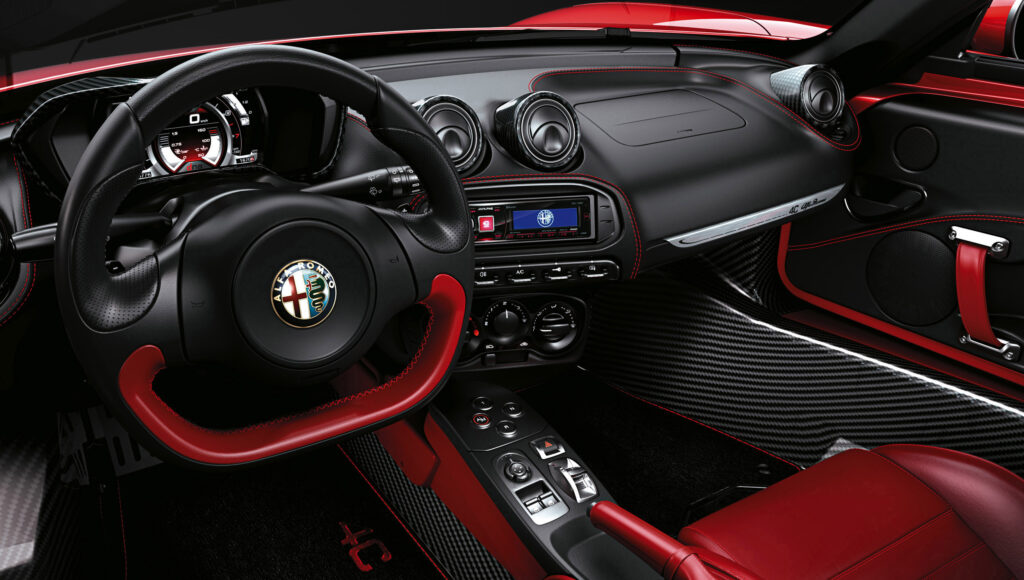
3D Printed Mazda Miata Hardtop
This is not a part designed or printed by me, but it is one of the best examples of Do It Yourself that can be seen in a car.
I recently bought an original hardtop for my MX-5, which are quite rare as they were optional at the dealership and few people wanted to cover a convertible in a semi-permanent way.
Not to mention all those that were broken in circuit accidents, as they are mandatory to compete in certain series.
This makes the price exorbitant, and in recent years, the cheapest ones cost over 1,000 euros each in most of Europe, and on the other side of the Atlantic, they are more than double that price.
Those who have a 3D printer and a place to work on something so large (drilling and dealing with fiberglass are necessary) can print their own hardtop.
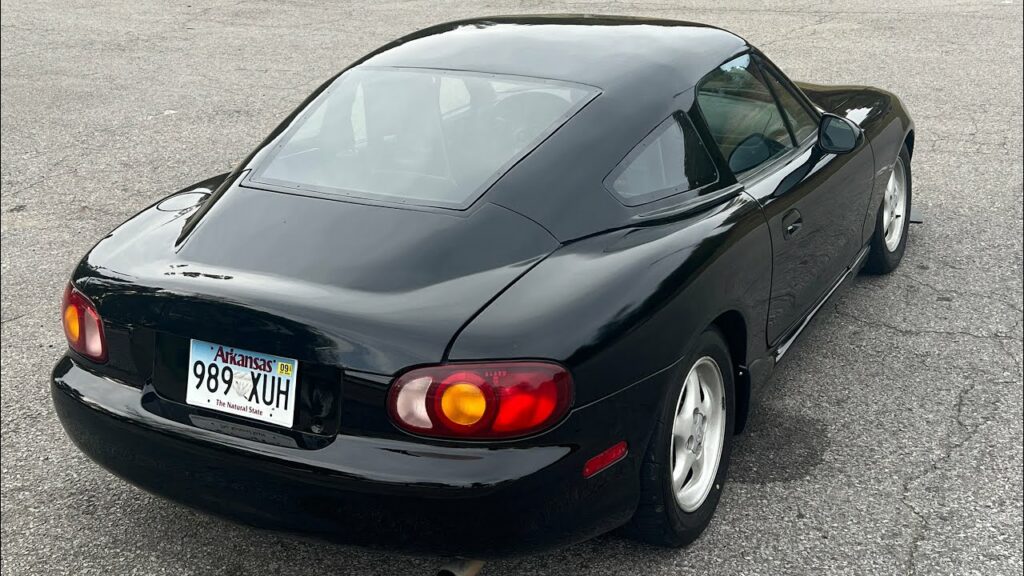
There are several models ready for 3D printing available for sale, although the most striking is the fastback model, which is available for purchase here.
In my opinion, this is the most beautiful model, although a replica of the OEM can also be made.
It is worth noting, as I have mentioned before, that making this part requires a lot of work, skill, and a closed space to do it alongside the car itself to ensure that everything is correct.
Better door bushings
A common problem for all Mazda Miatas worldwide, which all exhibit the same pattern: The bushings that hold the doors to prevent vibration are made of rubber.
The door itself is held in place by two parts: its lock and the mentioned bushing.
The lock prevents the door from opening while the car is moving, but it allows a lot of slack, so these bushings are added to keep it in place.
In this case, 3D printing is not the only solution, as these bushings are still being manufactured for use in the latest model, which continues to be on sale.
However, they tend to deteriorate repeatedly, making rubber not the best solution.
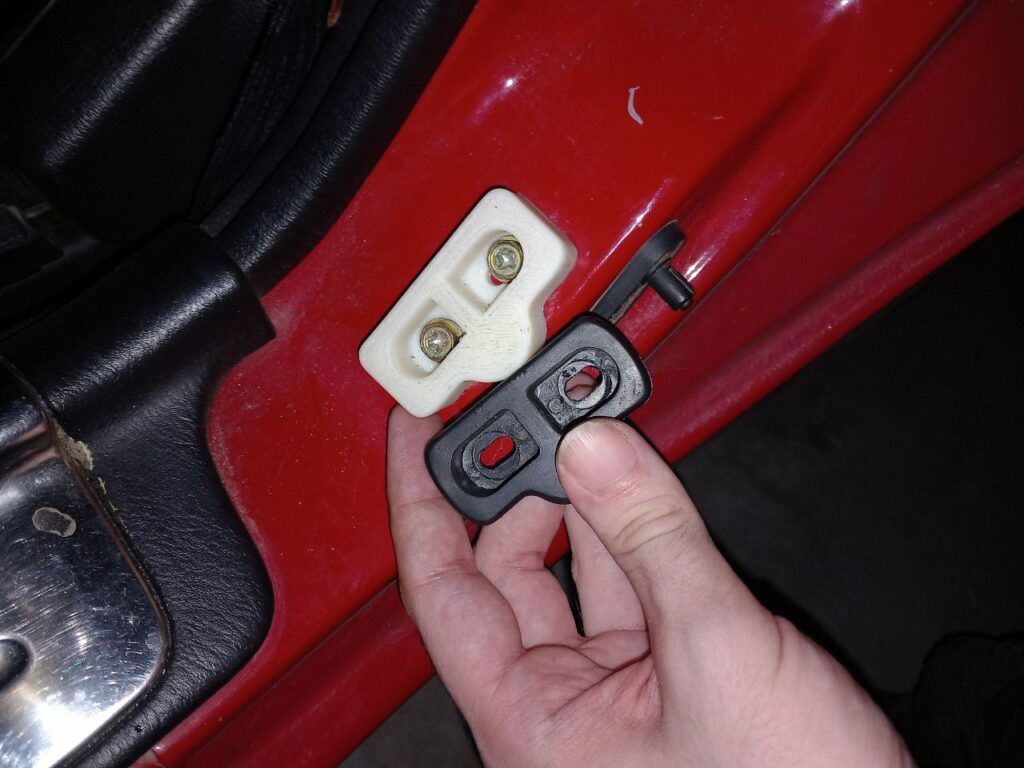
In this case, a simple print of a free model allows for a definitive solution to the problem.
It’s said that this even improves the chassis rigidity of the vehicle, though I find that hard to believe.
What is certain is that now the doors stay in place without vibrating when passing over poor-quality asphalt, and when closing, they sound much more solid. In words that are not my own: “It sounds like a premium car.”
Custom Air Vents
Over time, and especially with temperature changes, plastic tends to degrade, regardless of whether it was made by you with a 3D printer or manufactured using molds.
This was the case with the air vents in my car; when I bought it, they were starting to show signs of deformation, and although they are still being sold second-hand, they likely present the same problem.
Once again, thanks to 3D printing, you can make your own, as I did, with a more attractive design and freshly printed plastic that has a much longer lifespan.
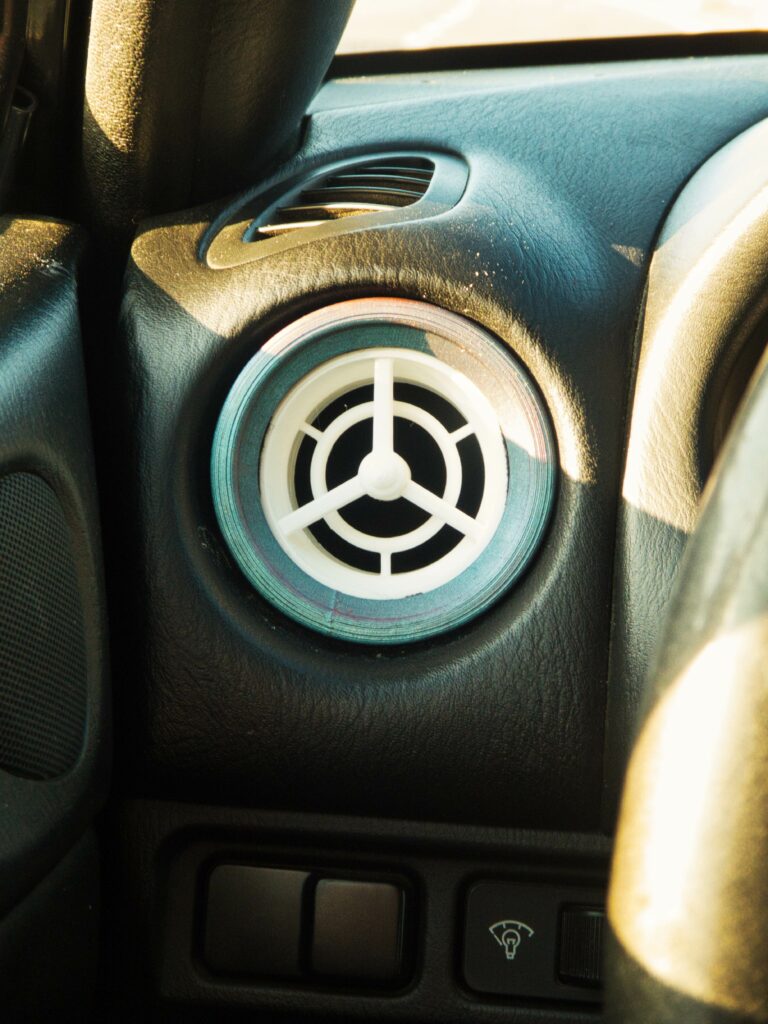
This is the first prototype of an air vent that I manufactured. Currently, I have a very similar one printed in ABS, maintaining the same color, white.
You can find this design and some more variations at this link.
Centercaps for Rims
The scarcity of parts can lead to absurd situations, to the point where the original rims are more expensive than ones with better specifications.
This happened to me when I broke a wheel on my car; a tire exploded and the impact caused the expected damage.
In my defense, the rims I had were aftermarket and of very poor quality. The previous owner had sacrificed lightness and good manufacturing for a questionable design and a weight close to 14kg per rim.
When I looked for OEM rims, I found ridiculously high prices, with the cheapest at the time being 700 euros for a set of 4, in a deporable state, and I saw that in some scenarios the price could rise to more than 1000 euros for ones in good condition.
To all this, we must add delivery times, possible customs fees when coming from abroad…
In my case, I don’t participate in car exhibitions and use my car mainly for daily driving and recreational purposes, so I decided to look for alternatives and found some Opel Corsa rims that fit at a ridiculous price.
What’s the problem? Opel rims on a Mazda.
Interestingly, they have the same design as the originals, and from a distance, it’s hard to tell they are not the factory ones.
However, up close, the Opel logo gave too many clues.
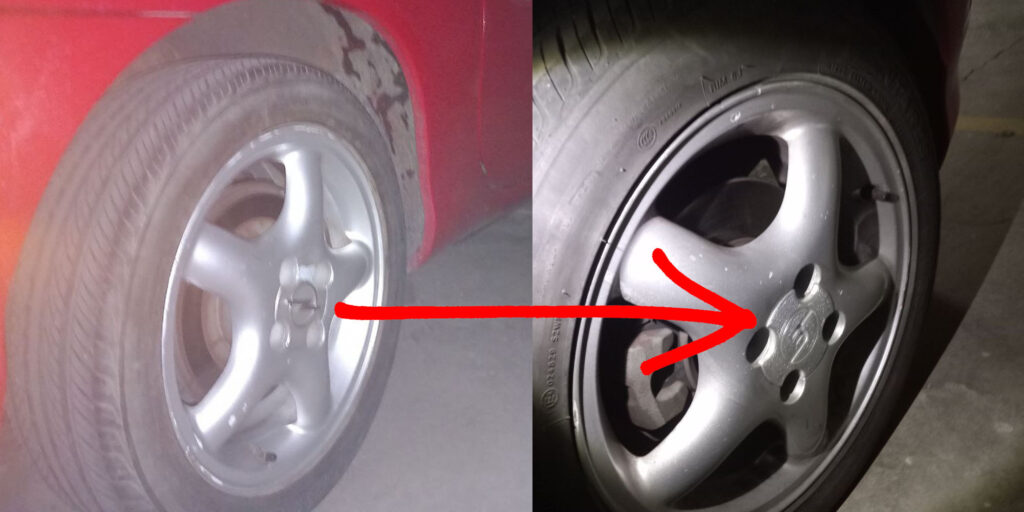
Once again, 3D printing came to the rescue to remove the Opel logo and replace it with the Mazda logo from the 1960s.
Time and money saved to achieve a solution very similar to the OEM.
3D Printed Spoiler
It’s debatable whether a spoiler has a functional purpose on a low-power vehicle, as no matter how much downforce it generates, it tends to be unnecessary except in very peculiar situations.
However, at an aesthetic level, it represents a significant improvement that makes a car more attractive.
This is the case with this person who decided to create a spoiler from scratch for their car:
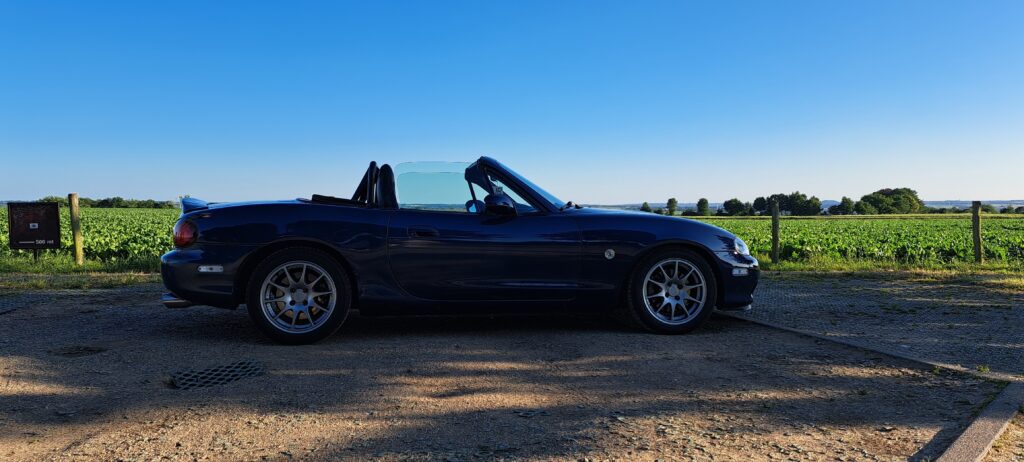
Heel & Toe – Modifying OEM pedals
If you like sporty driving, you surely know what heel-toe shifting is. When downshifting and reducing speed, you brake and simultaneously give a quick throttle blip to match the revolutions to the gear you’re about to engage.
This way, driving becomes smoother, there’s less wear on the clutch, and shifting gears is more precise since you don’t lose excessive speed.
What happens?
Not all street cars are equipped for this. Whether it’s due to the size of the pedals or the car’s own cockpit, in many cases, it’s impossible to perform with the stock vehicle.
In my personal case, having large feet, my car’s cockpit does not allow me to perform the traditional technique, so once again, 3D printing comes to the rescue:
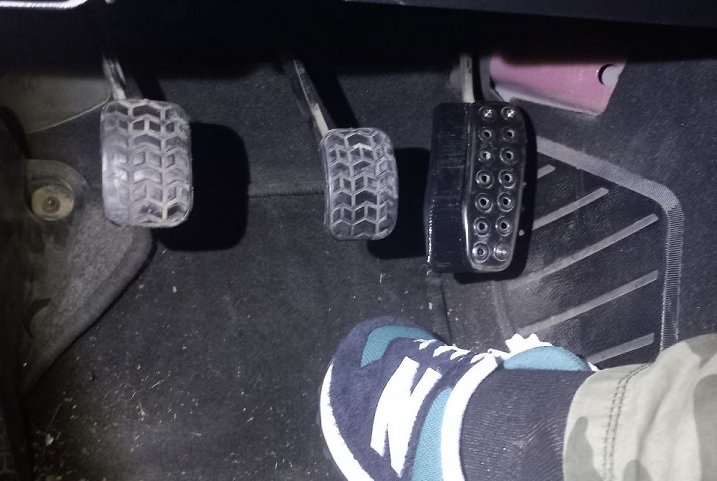
In the photograph, you can see on one side a pedal extender and on the other my foot.
This piece doesn’t solve the fact that I can’t place my foot horizontally, but it allows me to perform the same technique with my foot vertical.
Left side to the brake, right side to the accelerator.
It’s yet another example of how a 3D printer allows us to surf the limitations of a stock car.
You can download this pedal extender for free here.
Conclusion
I’m leaving out many parts, both my own and those of others; the possibilities are endless. Whether it’s for improving aesthetics, usability, or repairing a car, 3D printers represent a true revolution.
From the professional use by car brands to give a second life to their most iconic models to personal use for modifying and restoring any car.
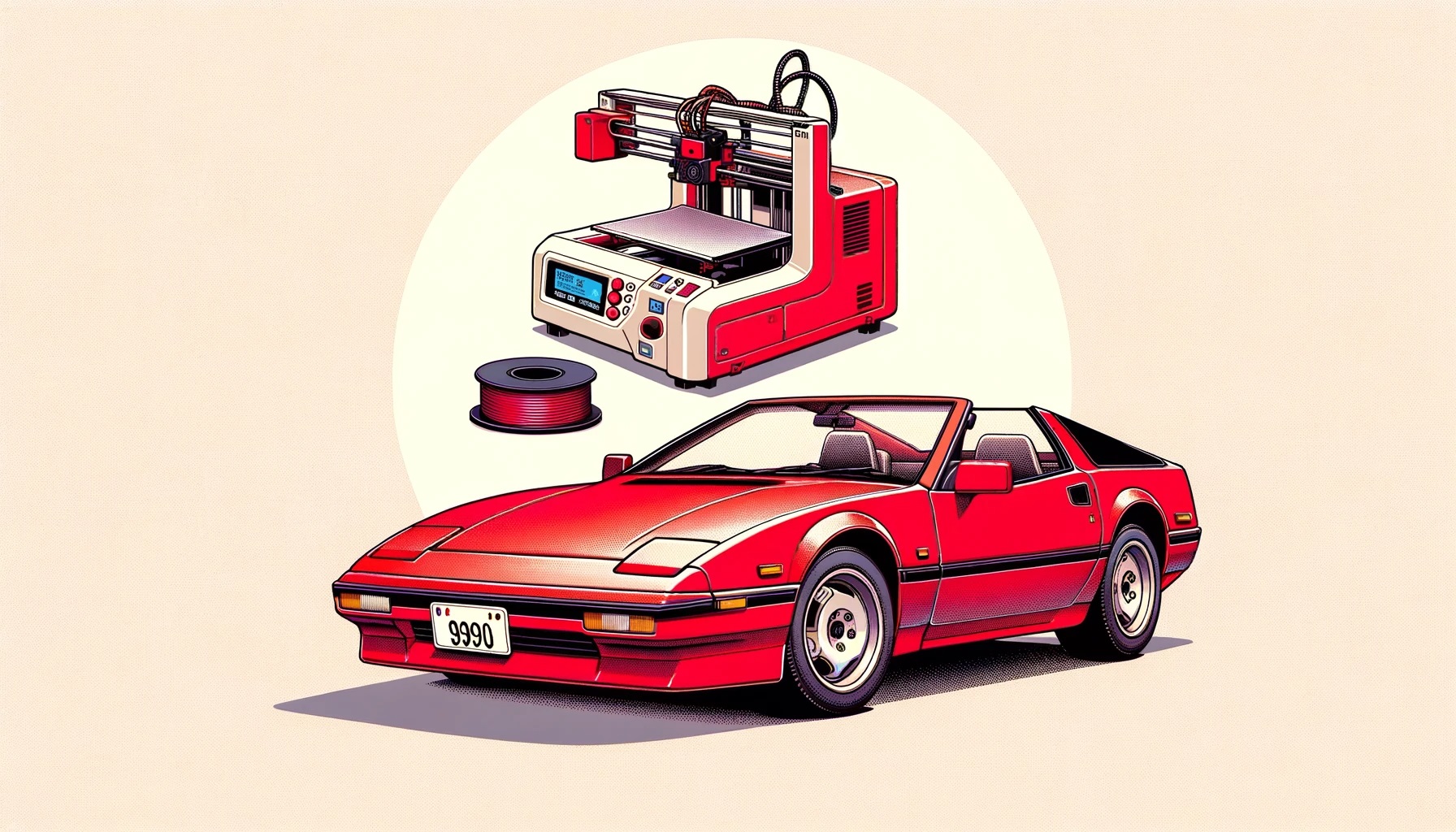
4 comments
Comments are closed.